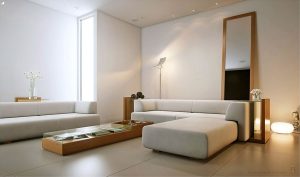In many ways, there is an intrinsic link between the concepts of minimalism and Eco-friendly living. This is largely because those who embrace minimalism automatically avoid pitfalls such as overbuying and excess consumption, which are also key principles of sustainable living in the modern age.

By its very nature, minimalism also eliminates waste, which reduces your homes’ carbon footprint and regular emissions.
In this article, we will look at how you can leverage this connection to create a minimalist, Eco-friendly and energy-efficient home.
-
Eliminate Clutter
This is the easiest and most effective way of creating a minimalist living space, while it also enables you to achieve such an objective without compromising on the functionality of your home.
While removing unnecessary clutter and striving to optimise the amount of floor space at your disposal represents the beginning of this process, it also needs to be part of an overarching philosophy and way of live. More specifically, your minimalist ethos should also inform future buying habits, as you look to avoid excess consumption and the perils of overbuying.
This creates a minimalist ethos that is sustainable, while also saving you considerable amounts of money over time.
-
Uncover Your Windows and Optimise the Sense of Natural Space in Your Home
There are also a number of less obvious steps that you can take to create a minimalist home, while also reducing your prevailing level of energy consumption.
Removing any outdated window coverings provides a relevant case in point, as these can instantly make any room feel cultured and oppressive. This instantly optimises the level of natural light that escapes into your interior at any given time, creating the illusion of sense of space and lending itself to a minimalist design brief.
In terms of sustainability, the optimisation of natural light negates the need for artificial illumination, meaning that you can reduce electricity usage and costs accordingly. This translates directly into a lower carbon footprint, particularly if you install LED fittings in your property to increase energy-efficiency further.
-
Introduce Greenery Into Your Home
The ultimate goal of creating a minimalist interior to establish a relaxing living environment, and the integration of greenery in your home can help to accomplish this. Interestingly, incorporating plants into your home is a key part of the Feng Shui philosophy, so it is renowned for contributing to an ergonomically designed interior that maximises the sense of space.
Plants also serve to naturally detoxify the air, whether they are presented in the form of a feature wall or various pot plants. This instantly creates a healthier home with an improved flow and quality of air, which in turn negates the need to use air conditioning and excess energy while reducing the carbon emissions that come from your property.
